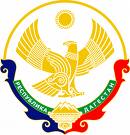
An Anonymous Letter Spreads Fear Among Dagestan’s Civil Activists
Publication: Eurasia Daily Monitor Volume: 6 Issue: 164
By:

Lengthy leaflets attacking Islamists in Dagestan and their supporters began to appear in Makhachkala during the first week of September and have alarmed human rights activists and journalists in the republic. The authors of the leaflet state that they have a list of 250 people who need to be eliminated, but for some reason they specifically name 16 people who, according to them, support the Islamists. All of those named are well-known journalists, human rights activists and lawyers in Dagestan (Kavkazsky Uzel, September 5). Kavkazsky Uzel’s own reporter in Dagestan is included in this list (Kavkazsky Uzel, September 7).
The intimidating letter was preceded by a crime that created shockwaves even in Dagestani society, which has grown used to violence in recent years. On August 23, five young people were kidnapped in the republic; two of them, Arsen Butaev and Islam Askerov, managed to escape, while the charred remains of the other three were found on August 26 (Kavkazsky Uzel, September 5). The relatives of the kidnapping victims staged public protests in Makhachkala on August 25 and August 26, but were eventually dispersed by the police (Novoe Delo, August 28).
The authors of the letter took responsibility for the killings, claiming that the murdered young people were Islamic extremists. According to Kavkazsky Uzel, similar types of incidents, with people being burned in their cars, took place earlier in August and in June. In those cases, the authorities claimed that those killed were insurgents who were carrying explosives, which had detonated and killed them. However, in the August 23 incident Dagestani police stated explicitly that they did not know of any links between those kidnapped and the insurgents (Regnum, September 7).
The authors of the letter, which was published in full on the Kavkaz Center website, claim that their aim was to take revenge on the insurgents and their accomplices for killing policemen and civilians, and to fight for the future of their children (www.kavkazcenter.com, September 4). Geidar Jemal, a prominent Islamic critic of the Russian authorities, made an in-depth analysis of the controversial letter and claimed that its authors were not Muslims, but rather sounded like members of the Russian security services (www.kavkazcenter.com, September 7). One of the figures mentioned in the letter, Gadzhimurad Kamalov, the founder of independent paper Chernovik, also said he was inclined to believe the Russian security services were behind the attack (Kavkazsky Uzel, September 7). The Dagestani police denied involvement in the crime and questioned the reliability of the two witnesses who escaped from their kidnappers, while the president of Dagestan, Mukhu Aliev, demanded that the crime be solved (Novoe Delo, September 4).
Given the scramble for the presidential post in Dagestan, as the current president’s term ends after several months, it is hard to understand who exactly might be behind the outbreak of violence and the corresponding threatening letter. However, it is symptomatic that the threats against the rights activists and journalists in Dagestan follow a series of unresolved murders of renowned rights activists in neighboring Chechnya in July and August. Many observers pointed to the ruler of Chechnya, Ramzan Kadyrov, as the perpetrator of those killings. It may be that, by targeting the rights activists, the security services are now trying to set up Kadyrov, only in Dagestan. Given that the letter came immediately after the two kidnapped people managed to escape from their kidnappers, it may also have been designed to cover up the blunder.
An eloquent detail came to light when the kidnapping victims told their story. One of them, Arsen Butaev, claimed that the kidnappers promised to free him and his younger brother if he killed the other three who had been kidnapped (Novoe Delo, August 28). This move, if it indeed happened, was probably designed to recruit the two brothers for similar types of assignments in the future. This, in turn, may be indicative of a specific tactic that Moscow is adopting in Dagestan, as well as in other North Caucasus republics. The tactic is aimed at fueling civil conflict, in which the locals would fight each other with minimal open interference on the federal forces’ side.
The threats against the rights activists and journalists in Dagestan came shortly after an August 20 incident in which the office of Mothers of Dagestan for Human Rights organization, which is also mentioned in the letter, was set on fire (Kavkazsky Uzel, August 22). Several journalists of the Chernovik newspaper, who were accused in the letter of being accomplices of the insurgents, have been involved in criminal court proceedings for over a year while, at the same time, the authorities seem to be determined to close down their paper (EDM, June 30). On August 11, another journalist, Malik Akhmedilov, was killed in Dagestan (Reuters, August 11). The murdered journalist worked for a newspaper affiliated with Gadzhimurad Kamalov, who is also named in the letter among the people to be eliminated.
Pressure on rights activists who work on North Caucasus issues may extend even beyond the region. Kavkazsky Uzel reported on September 5 that unidentified people claiming to be government officials tried to collect personal information about the head of the Memorial human rights center, Oleg Orlov, and Memorial council member Alexander Cherkasov. Both of them are known for their extensive work on North Caucasus human rights-related issues.
The violence and threats against rights activists and journalists in the North Caucasus -which the authorities seem unable or unwilling to tackle- vastly contribute to the growing climate of suspicion and fear in the region. This atmosphere is likely to suppress further civil freedoms in the region, but unlikely to do much to suppress the insurgency.




